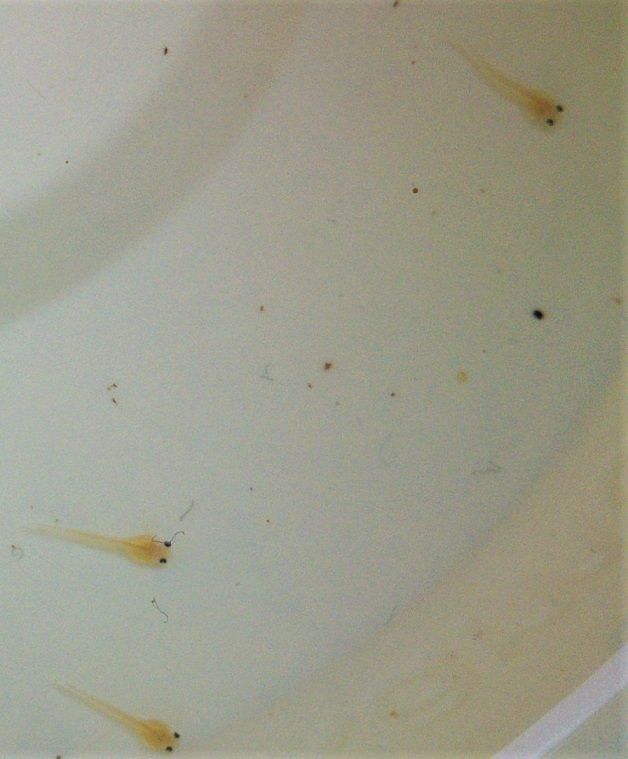Scleromystax - Report No.2
Submitted by erik.schiller on 31. May 2016 - 20:17
Report No.2
Roman Lechner
Scleromystax sp. C112
The S. sp. C112 have been living in a tank measuring 80x60x30 cm (LxWxH) together with a few Loricaria catfish. In the beginning the animals seemed very weakened, losses during transport from England to Germany confirmed this. The two remaining females and the only male - unfortunately with a deformed spine - have recovered well so far and often show themselves near the front glas. The females have gained weight and are spawning already in few numbers, so that nothing should stand in the way of a breeding attempt in autumn at the latest.
Roman Lechner
Scleromystax prionotos
Although the six S. prionotos were only 2.5 cm tall when we took them over, they were able to acclimatise well, contrary to expectations. In the meantime, some specimens already measure over 4cm. They are fed with various high-quality fry pellet food and home-bred daphnia. Unfortunately, the species is a bit shy, they like to hide behind the decor - except when feeding.
Manuel Harringer
Scleromystax sp. C113
The treatment against melting of the fins was successful and there were no losses. The animals have also grown in the meantime and there really seem to be three females in the group. The two males show clear territorial behaviour and interest in the females.
In order to create even more current, two additional powerheads and an air stone have been added, and the conductivity has been further reduced to approx. 100µS using rainwater. The water change interval was increased to 3-4 times a week last month.
Erik Schiller
Scleromystax kronei
On 13.5.16 a spawning occurred due to an increase in current and weather conditions (drop in air pressure). The pair laid a clutch of approx. 150 eggs, but 2 days later it was eaten by the male.
Erik Schiller
Scleromystax macropterus
No losses to report, the male specimens are growing their elongated fins back a little. This is probably related to the water changes. These are no longer carried out so often, S. macropterus are currently in a dry phase. Few water changes. The main food is now lots of live daphnia and cyclops.
Erik Schiller
Scleromystax sp. C 113
There is one female in the group (I was not 100% sure at the beginning). All the remaining animals (5) are males. The first spawning took place on 13.5.16. 44 eggs were released at the front pane, in the current. After 5 days the eggs hatched, unfortunately most of them died shortly before hatching. 10 larvae hatched, but unfortunately all died (due to holidays).
Robert Budrovcan
Scleromysrax lacerdai
After receiving the fish, they actually developed badly. Of the original fish, the three largest animals and two smaller ones died within a very short time. Despite very varied feeding with mainly frozen and live food, hardly any growth could be detected. As a result, deworming will be carried out in the next few days.
Robert Budrovcan
Scleromystax macropterus
Like the S. lacerdai, these animals live in a tank measuring 80x50x30 cm with hardly any equipment. This consists of some larger stones and an Anubias var. nana in the middle. As these animals have been in my possession for a long time, there have been no losses recently. The stock is currently 15 animals in a size of around 5 cm. Feeding is done once a day with frozen or live food, as with all other animals. Flashing of the animals has been observed and they are now being treated against unicellular ectoparasites. No breeding activity can be detected.


Category:
